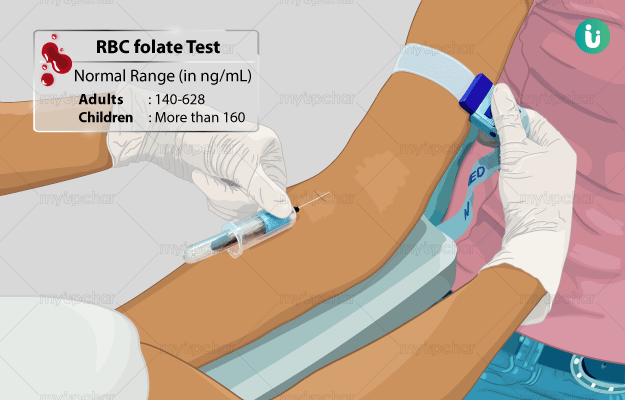What is RBC (Red Blood Cell) Folate test?
RBC folate test determines the level of folate (a type of B vitamin) in your red blood cells. It gives a measure of folate stored in body tissues and is used for diagnosing folate deficiency.
Folate or folic acid is essential for the normal functioning of our blood cells, i.e. RBCs, white blood cells (WBCs) and platelets and is required for the synthesis of DNA (genetic material). In pregnant women, folic acid plays a vital role in the growth and development of the developing foetus. Some dietary sources of folate include milk, leafy vegetables, beans, yeast, liver and citrus fruits.
Normally, a serum folate test is done to check for folate deficiency. However, folate level in the serum (liquid portion of blood) only indicates recent dietary intake and is not a reliable index for the amount of folate stored in body. RBC folate level, on the other hand, is a better indicator of the tissue stores of folate. It reflects the dietary intake of folate over several months and is not usually affected by the folate intake on a single day.













